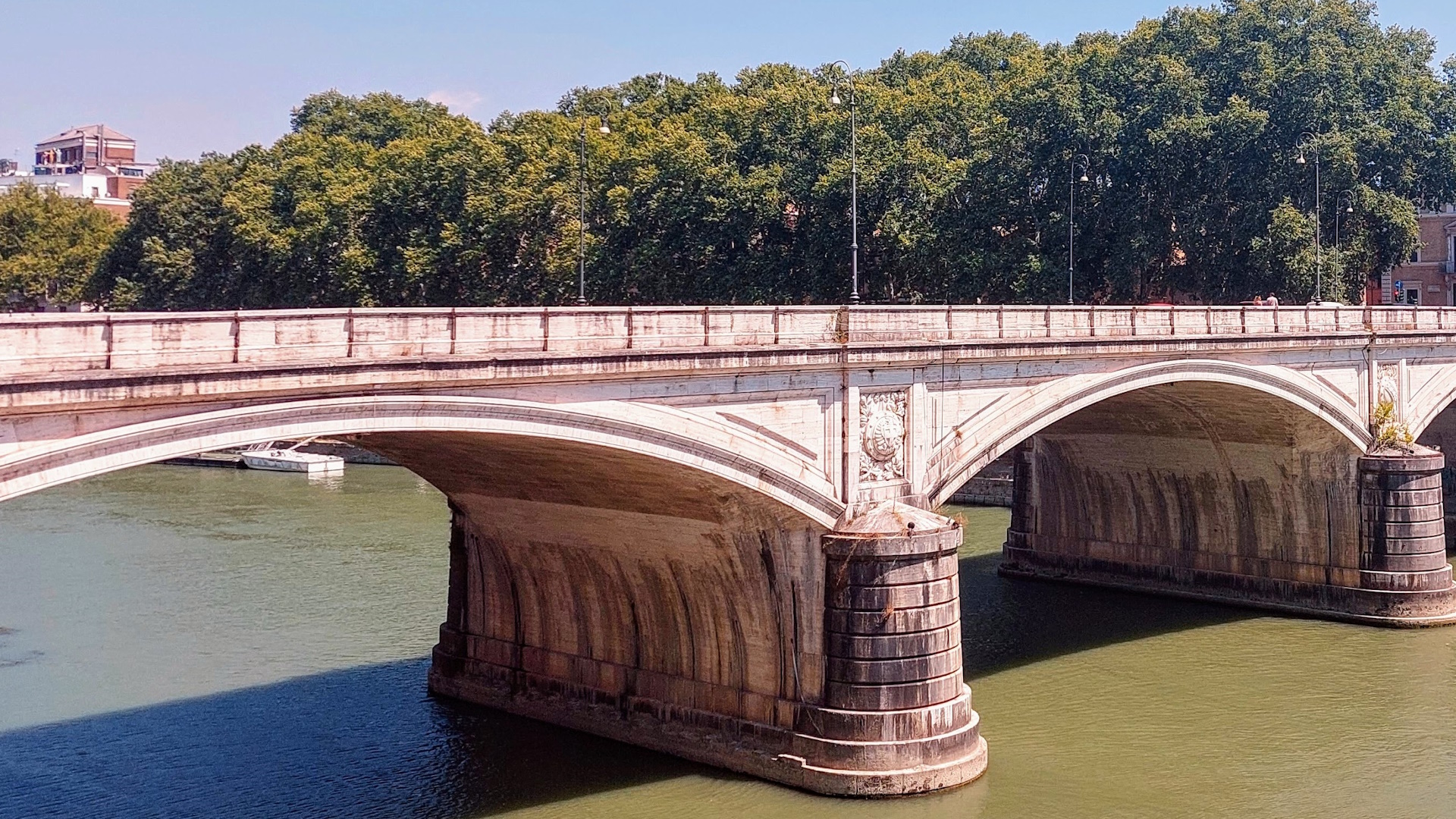
Architecture and engineering of the late 19th century
It is one of the bridges built after the unification of Italy, mainly for reasons of viability. In charge of its design was engineer Angelo Vescovali, the then head of the Municipal Hydraulic Office, who also designed Ponte Garibaldi, Ponte Palatino, Ponte Regina Margherita and Ponte Cavour. It was initially to be called Ponte dell’Orso in homage to the nearby ancient Albergo dell’Orso where Dante Alighieri was said to have slept during his stay in Rome for the Jubilee of Boniface VIII in 1300. At the end of work on its construction, which began in 1885 and lasted ten years, it was then instead dedicated to the King of Italy Umberto I, who personally inaugurated it together with Queen Margherita of Savoy on 22 September 1895, as part of the celebrations for the 25th anniversary of the Breach of Porta Pia.
Between the Palazzaccio and Piazza Navona
The bridge connects the area around Piazza Navona with the opposite bank of the Tiber, where the late 19th century massive urbanization would lead to the establishment of the Rione Prati. Coming from Piazza Navona and the historic center of Rome, the long facade of the Palazzo di Giustizia (Palace of Justice) dominates the perspective of the bridge. At the end of the inauguration ceremony of the new crossing of the Tiber, the king and queen had gone precisely to visit the construction site of the “Palazzaccio”, the nickname by which the monumental palace designed by architect Guglielmo Calderini is popularly known, which at the time was still under construction. The bridge was also designed to serve and aesthetically complement the Palace of Justice.
A postcard view
Made mainly of travertine marble and the distinctive Subiaco stone, Ponte Umberto I (also known by its shortened name Ponte Umberto) is over 105 meters long and 20 meters wide. It spans the river with three arches resting on piers embellished at the top with bas-reliefs, including the Savoy eagle. Solid and imposing but at the same time elegant, it may not have the charm of Rome’s oldest bridges, but it offers the certainty of a wonderful panorama and allows us to admire Ponte Sant'Angelo and the dome of St. Peter’s in all their beauty.
Information
 Condividi
Condividi
Location
To find out about all accessibility services, visit the Rome accessible section.











































